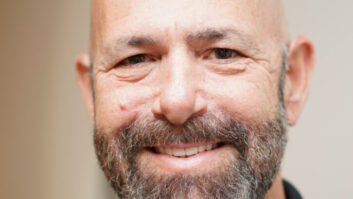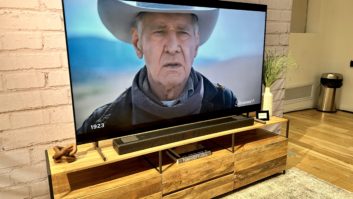San Diego — Sony will discontinue its buying group co-op programs as a consequence of a new local marketing strategy that focuses on individual retailers and even specific store locations rather than channels of distribution.
Sony’s new approach to market, which was conveyed to dealers and buying group execs at last month’s open house in Las Vegas, also augurs greater product parity for national discounters like Wal-Mart and Costco.
For buying groups, primarily NATM Buying Corp., Progressive Retailers Organization (PRO Group) and Home Theater Specialists of America (HTSA), the new distribution plan means that Sony’s marketing support dollars will now flow directly to dealers based on individual performance, rather than through group coffers based on collective sales volume.
The co-op funds will be factored into structured dealer programs that replace group-level merchandising programs, buying group execs said.
According to Roger Heuberger, executive director and president/CEO of PRO, member dealers can expect to see the same level of marketing support, if not more, under the new Sony plan. As a group, however, PRO, which collectively accounts for “hundreds and hundreds of millions of dollars in sales” for Sony annually, and which enjoyed the vendor’s largest trailing incentive program, stands to lose the most.
Heuberger noted that Sony will use its greater control over local pricing to provide special concessions to dealers who will now face increased competition from its mass-merchant accounts or even from Sony’s own stores.
“Sony is a genuine competitor,” Heuberger said, citing the financing programs and sales promotions offered at the vendor-operated chain. Indeed, the company opened three more 6,000-square-foot Sony Style stores last month, in San Jose, San Diego and Schaumburg, Ill., completing its planned 15-unit rollout for the fiscal year.
Accommodations to individual dealers will also help compensate for shortages of, and price drops on, Sony rear projection LCD TVs and flat panel displays, Heuberger said.
For NATM, Sony’s new local-level focus effectively ends its four-year run as a core group vendor. “Sony was never thrilled with group programs, and their new management team is taking them in a new direction,” observed NATM president and executive director Bill Trawick. “Even though we no longer have a core program with them, we will continue to work with them and grow with them, and they will continue to be a very important supplier for us.”
NATM hasn’t named a successor to Sony to fill out its traditional triad of core video vendors, and is in no hurry to do so. “I think too much attention has been paid to core program status,” Trawick said. “We’re having our best year ever with Samsung, which is not a core supplier, and some of Mitsubishi’s best years with us were when they weren’t a core supplier either.”
Both NATM and PRO Group will continue to collaborate with Sony on marketing, promotional and product issues, their presidents said. HTSA was holding its annual member meeting in Hawaii at press time and was not immediately available for comment.
According to Sony, the ultimate focus of its new micro-marketing gambit — and wider distribution of its better lines — is the end user. “For years we talked about channels of distribution, but it’s really a matter of analyzing the customer,” said Jay Vandenbree, Sony’s senior VP/strategic sales planning, Consumer Sales Company. “What do consumers want, what is the value proposition for the retailer, and how do we match those up?”
“Customers are more informed now than they used to be,” he told TWICE. “It is a matter today of finding what is appropriate for the customer who shops in Best Buy, Circuit City, Wal-Mart, Target or Tweeter. The focus for us has been treating every one of those [retailers] individually. What’s appropriate for one may or may not be appropriate for another.”
While Vandenbree stressed that “We don’t sell everything to everyone,” and that the specialty retail strata remains “very, very important to us,” he acknowledged that “A lot of the industry’s focus has moved to Costco and Wal-Mart,” where end users are heading to buy their consumer electronics.
“So, would that warrant a whole line of our distribution? Does the product fit into the mix that’s there? There are an awful lot of things that go into it, including backroom operations. I think the days of one-size-fits-all, even within a class of trade, are disappearing. It comes down to the analysis of what makes sense and what doesn’t make sense, and it has to make sense for both of us.”













